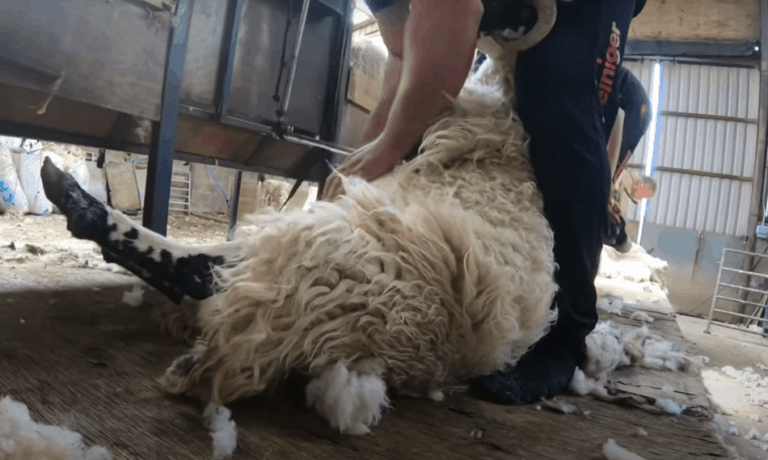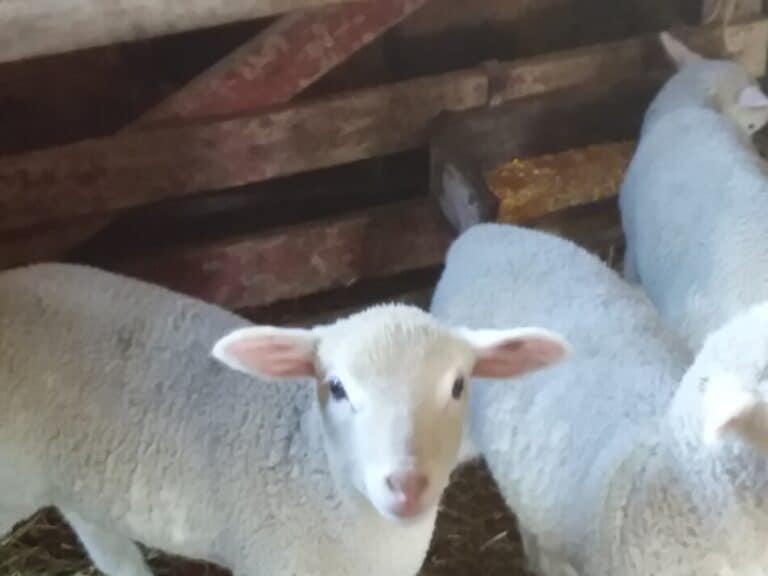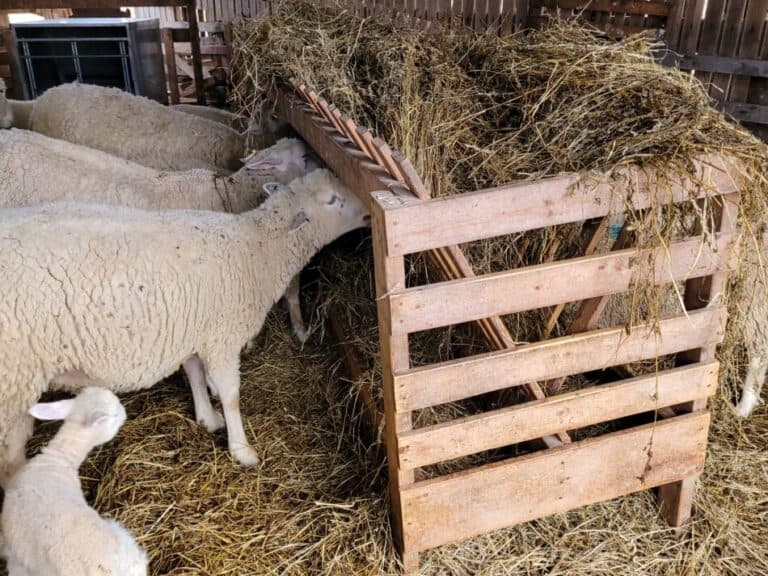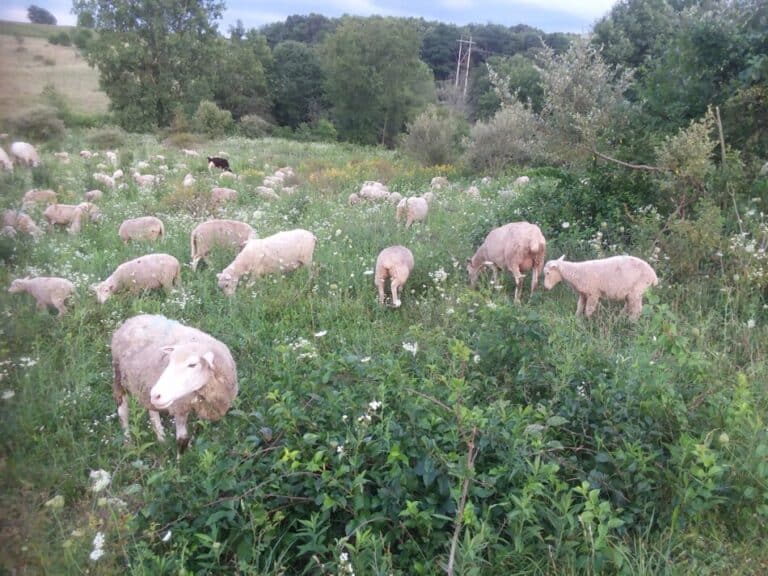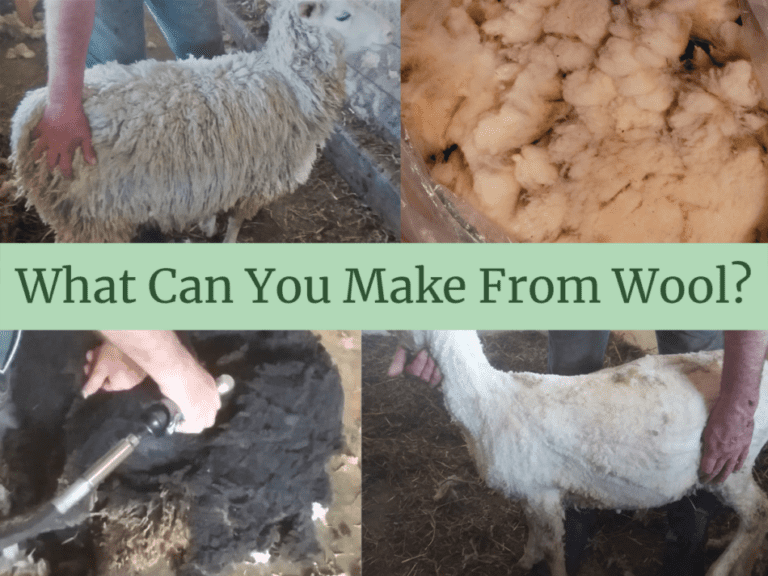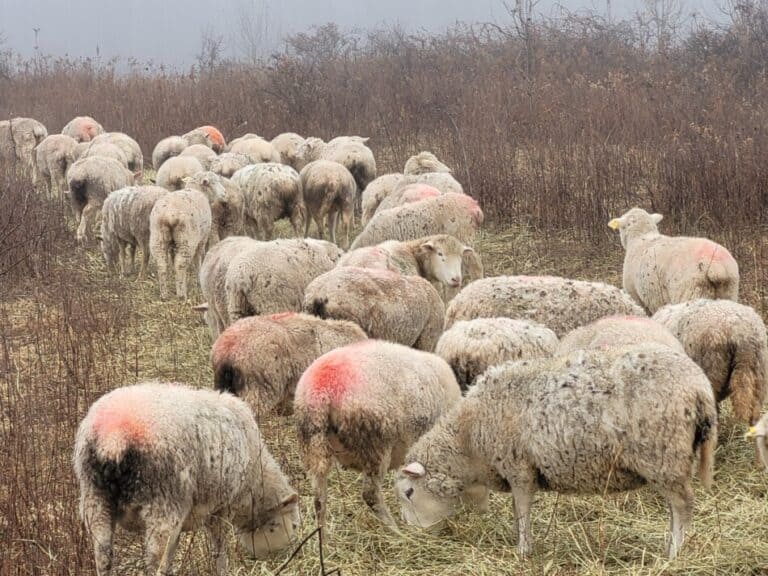How Much Does It Cost To Feed A Sheep?
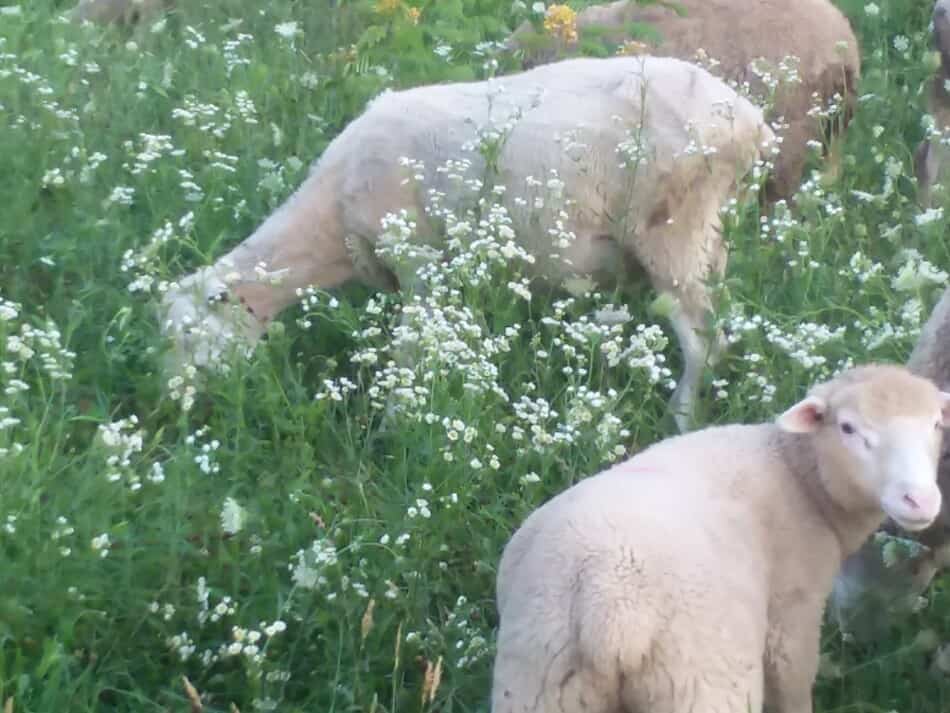
Welcome to the world of sheep! Now that you have decided to buy your flock it’s time to figure out how much it will cost to feed them.
Since keeping feed costs reasonable is the best way to ensure a profitable flock, we need to know how much it will cost to feed sheep!
The cost to feed sheep per year will be $54, which is based on $200/ton hay and pasture as the only feed source for 8 months. A shorter grazing season, limited pasture access or off season lambing will increase this cost.
You are going to have some options when it comes to how you feed your sheep and these options will have a large impact on purchased feed costs.
Here are the basic assumptions I am using as the foundations for this article: you have some pasture for summer grazing, you are lambing in the spring on grass, you are raising commercial sheep.
If you are not raising your sheep the same way, the costs will change for you. That isn’t a problem, just something to be aware of.
How Many Bales Of Hay Do Sheep Need? shows you how to calculate out the hay needs for your sheep, based on your area’s grazing season.
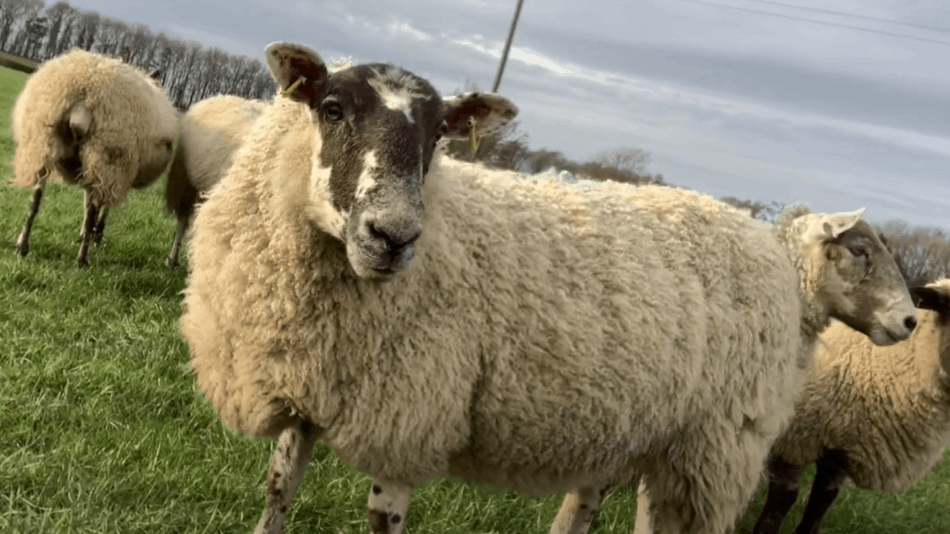
As with all things in responsible animal husbandry, there is no one size fits all or even fits most approach here.
That idea is a fallacy, please do not fall into the trap! Your farm, your sheep, your management, etc. will all make your numbers different than mine.
Reading this article will give you a good idea of what you need to include and figure out. In the end, you’ll need to run the numbers that apply to you!
Best Hay For Sheep goes over how to pick the hay that matches the needs of your flock, based on their age or reproductive stage.
Cost for us to feed a sheep for a year
Let’s start with the costs that we have per sheep. This will give you an idea of what your sheep will need for the year.
We have enough pasture to keep the sheep on pasture alone (with salt, mineral and water, of course) for 6-8 months of the year.
In this example I am not counting the cost of the pasture, since this is about purchased feed. If you rent pasture, you’d need to add in that cost, as well.
We plan on feeding the sheep the majority of the feed they need as hay for 4 months of the year.
Sometimes, the hay ends up being more like 6 months, it is very weather dependent, but either way we hope for four months!
Amount of hay needed per sheep
Each day your 150 pound ewe (adult female sheep) will need to eat 3% of her body weight in feed. That is 4.5 pounds of hay per day.
Notice that the amount of hay is based on the weight of the sheep and her reproductive stage (more on that later), so smaller sheep need less, larger sheep probably need more.
Cost of hay needed per sheep
We’ll use a hay cost of $200 per ton. A ton is 2,000 pounds. Divide the hay cost per ton by the pounds in a ton to get the cost per pound of hay
$200/ton divided by 2,000/pounds/ton = .1 That’s $0.10/per pound for hay.
Cost of hay for the winter per sheep
Now we need to figure out the cost of feeding the sheep for the winter season.
We are using 120 days (4 months) and 4.5 pounds of hay per sheep per day.
4.5 pounds of hay x $0.10/pound = $0.45/day /sheep in hay costs
120 days x $0.45/day = $54 per sheep for winter hay
There will be a few extra expenses in your sheep budget like deworming, salt and minerals. Also remember there is no grain in this ration.
You could feed grain if you feel your sheep need it, just be sure to calculate it into the feeding costs for the year.
As far as paying for pasture goes, I am figuring that you are using or considering using land you already have so I did not figure that cost into this example.
If you are paying for pasture or are considering renting or purchasing land based on it’s productive abilities, you need to consider the rent or purchase price of the land as well.
Here is a quote from Penn State Extension Feeding The Flock article under the section of Non Lactating and First 15 Weeks of Gestation
130 pound ewe; Choose one:
- Pasture, if adequate
- 3 lbs. of alfalfa or clover hay
- 3.5 lbs. of grass or mixed hay
150 pound ewe; Choose one:
- Pasture, if adequate
- 3.5 lbs. of alfalfa, clover, mixed or grass hay
If you do the math, these figures end up at around 2.5% body weight per day in hay.
Remember, this is for a maintenance adult, not nursing babies or late pregnancy when she would need more energy or the lambs themselves who would also need more feed.
Read the Penn State article linked above, it’s a good one. Be sure to note the sections that show a ewe nursing twins, she will need nearly twice the hay as a maintenance sheep and some grain!
Note: In my example above the quote, I used 3% of her body weight in hay since our sheep are working (bred) and kept on pasture for the winter when eating hay.
If your sheep are just hanging out, 2.5% will work great.

What changes sheep feeding costs
- Where you live
- Amount of purchased feed needed
- Pasture or other forages grown you grow
- Easy keeper sheep
- Weather
- Reproductive stage of sheep
- Management of the flock
Where you live
Where you live refers to both your local area and your region.
Backyard sheep: If you do not see any farm or farm land on your way to work each morning then feed costs are going to be higher for you, since the hay will have to be brought into the area.
If you live in a livestock area, them you will be able to get feed at a more reasonable price.
Your region: If you are living in an area of the country that does not grow much forage, then your costs for hay will be higher.
Amount of purchased feed needed
Any of the forage you can grow for your flock, like the grass in your yard or pasture, will save you money on feed costs.
If you will need to purchase all of the feed for your flock, that is definitely doable.
Obviously, purchasing all of the feed year round will increase the costs of keeping sheep.
Don’t let this be a deal breaker for you.
Think about all of the people who have animals and buy all of the feed for them, an easy example would be horses at a riding stable. And of course, your dog!
Everyone that I know of who keeps animals year round has to buy some feed/hay, including farmers who graze through the winter.
The only consideration here for you is how many months of the year will you need to buy for?
A thought on purchased feed: if you can buy in bulk amounts, you can usually get a discount. For instance: buying hay by the bale is pricey, by the ton, which is 40-50 small square bales, is generally less money.
Why? Because it is less work for the seller, especially if they are delivering the hay to you.
Pasture or other forages you grow
Any home grown forages, like your backyard or pasture, will be feeding your sheep at least some of the year, which will keep down feed costs.
How much eating can your flock do in your backyard? That depends on how much rotation you are willing to do.
Check out my article on Small Acreage or Backyard Sheep for a sample diagram of a yard layout with grazing divisions.
Even though we have over 200 ewes, 278 last count, we still put ours in the yard and anywhere else grass grows. We don’t have to mow and get the sheep fed, at the same time.
Easy keeper sheep
Some sheep, individuals and/or breeds, will be easier keepers than others.
What do I mean by easy keeper? An easy keeper is a sheep that grows well on the feed you give it.
The opposite is also true, a hard keeping animal, usually referred to as not an easy keeper.
A “hard keeper” is the sheep version of the person who can eat and eat and eat and never gain any weight.
If you want a sheep that is not an easy keeper as a pet, well then get what you want!
If you are looking to raise sheep for any sort of return (money) you’ll want an efficiently gaining type of sheep.
Weather
Feed costs are affected by weather, there is no getting around it.
The cost of the feed to purchase it, usually due to lack of availability or the local weather being colder, wetter, warmer, whatever “er” than normal so your feed budget is off.
On the plus side, warmer in the winter than normal usually means early spring, so less winter hay feeding until spring!
Sadly, the opposite is also a possibility, a longer winter than expected equals more hay feeding than expected for the year.
Reproductive stage of the sheep
The example above showing $54 per sheep for winter hay is for gestating (pregnant) ewes or maintenance needs sheep.
For sheep that are just hanging out with you for the winter, this is a good estimate.
If you are winter hay feeding to ewes with lambs, your hay needs are going to skyrocket.
Why? Not only will they need to take in more hay each day, it will need to be a higher quality hay, so chances are it will cost more than your gestation appropriate hay.
Management of the flock
Management of the flock is all you, this is where you’ll make or break your feed costs for the year.
What are some of the management decisions that can reduce feed costs? Keeping the parasite load low in your sheep, rotating their grazing area and culling out non or low performers.
An aspect of flock management that might surprise you regarding feed costs is to feed high quality (usually more costly) and buy high quality animals, once again probably more money.
Meaning the way to keep feed costs lower is to spend more on getting efficient sheep to start with and always buying high quality feed.
Cheaping out on feed or stock will come back to haunt you later. I like to say quality repeatedly pays.
Another way of feeding sheep is Creep Feeding, which is providing extra feed or really nice hay only for the lambs, the ewes can not get in. While this works best for sheep inside, so we don’t do a lot of creep feeding, it is an option.
Sheep 101: Feeding is a wonderful sheep site that has a nice overview section on feeding sheep.
